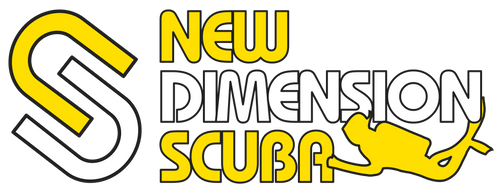The first time I saw a wing & backplate was the same time I saw some technical divers going into the water with the long hose setup. Obviously I knew this was a different BC setup and again, it looked so good.
CONTENTS:
My Experience
As I already spoke about when I got my own long hose setup, one of my fellow instructors suggested to me that I should try my new long hose setup with wing & backplate. Sure why not, always keen to learn something new in diving. Wow, what an experience! To me, it’s so comfortable and my buoyancy and trim improved with it as well. I told myself this is going to be my new way of diving, no turning back after this experience and of course, I bought my own set.
Backplates
Backplates come in different sizes and different materials. The most common backplates are made of aluminium or stainless steel. There are also some backplates made of carbon fibre as well, but not as common as the other materials. Carbon fibre is very light compared to stainless steel.
What type of backplate is good for you? It all depends on your type of diving. For example, we will use my type of diving. I’m a diving instructor in Malta, so I don’t travel a lot for diving. I dive most of the time in a dry suit, which is nice and warm. I don’t get wet unlike if you were wearing a wetsuit unless the suit has a leak, then I don’t like my dry suit at all. So ideally a heavy backplate (stainless steel) is good for my type of diving which means I don’t have to wear a lot of additional weight.
Let’s say you just dive for pleasure and need to travel by plane for your diving. An aluminium backplate would be better for you as this is lighter than a stainless steel backplate and it would be less weight in your luggage. Maybe you are too a diving instructor in very warm water, tropical island, or country where a dry suit is not needed. An aluminium backplate would work for you as well. As I have explained, it all depends on what type of diving you do and where you dive the most.

Setting Up A Backplate
Setting up a backplate can be a very tricky task. A backplate comes with a webbing system. The webbing keeps the backplate in place (on your back). Some plates come with the webbing already set up for you, lucky for you if you bought your backplate like this. If you need to set it up yourself, best to do this with a fellow diver who has experience with setting up the webbing on a backplate. Usually, there are D-rings that come with it as well. D-rings look this these:
The D-rings are placed on the webbing just like in the following photo. On the rings, you can clip for example your regulator if you have a long hose setup. On the left side on your waistband, there will be a D-ring placed as well to clip your SPG on.
At the bottom of the backplate, there is another strap “not shown”, this is your crotch strap. The crotch strap comes down between your legs and up to the waistband and is attached to the waistband via the loop on the end of the crotch strap. This helps to keep the backplate in place.

Different Wings
The two main types of wings are, doughnut and horseshoe. The names already kind of explain the shape already. With a doughnut, the air in the wing can travel all around as for the horseshoe, the air can only travel to the sides, so there is no bottom part.
Horseshoe is very suitable for when you’re diving with aluminium cylinders, as for when you use a doughnut wing, it will push the bottom of the cylinder further up as you use the gas from the cylinder while diving. Aluminium cylinders become much lighter when using them, as opposed to steel cylinders.
Doughnuts, on the other hand, are great for diving with steel cylinders. Because what the horseshoe doesn’t have, the doughnut has on the bottom part where the air can travel, so it lifts up the cylinder.
There are also different sizes, the two sizes that are used are for a single cylinder or for a twinset. Simple as that.
With a wing, there are only two ways to dump gas. You have your kidney dump valve and your dump valve on your LPI. As for a BCD, you get a third one, the shoulder dump valve.
If you want to learn more about wings and backplates – these are the courses you should be looking at PADI Peak Performance Buoyancy & PADI Advanced Open Water Course

Written By: Jasper Mulder

